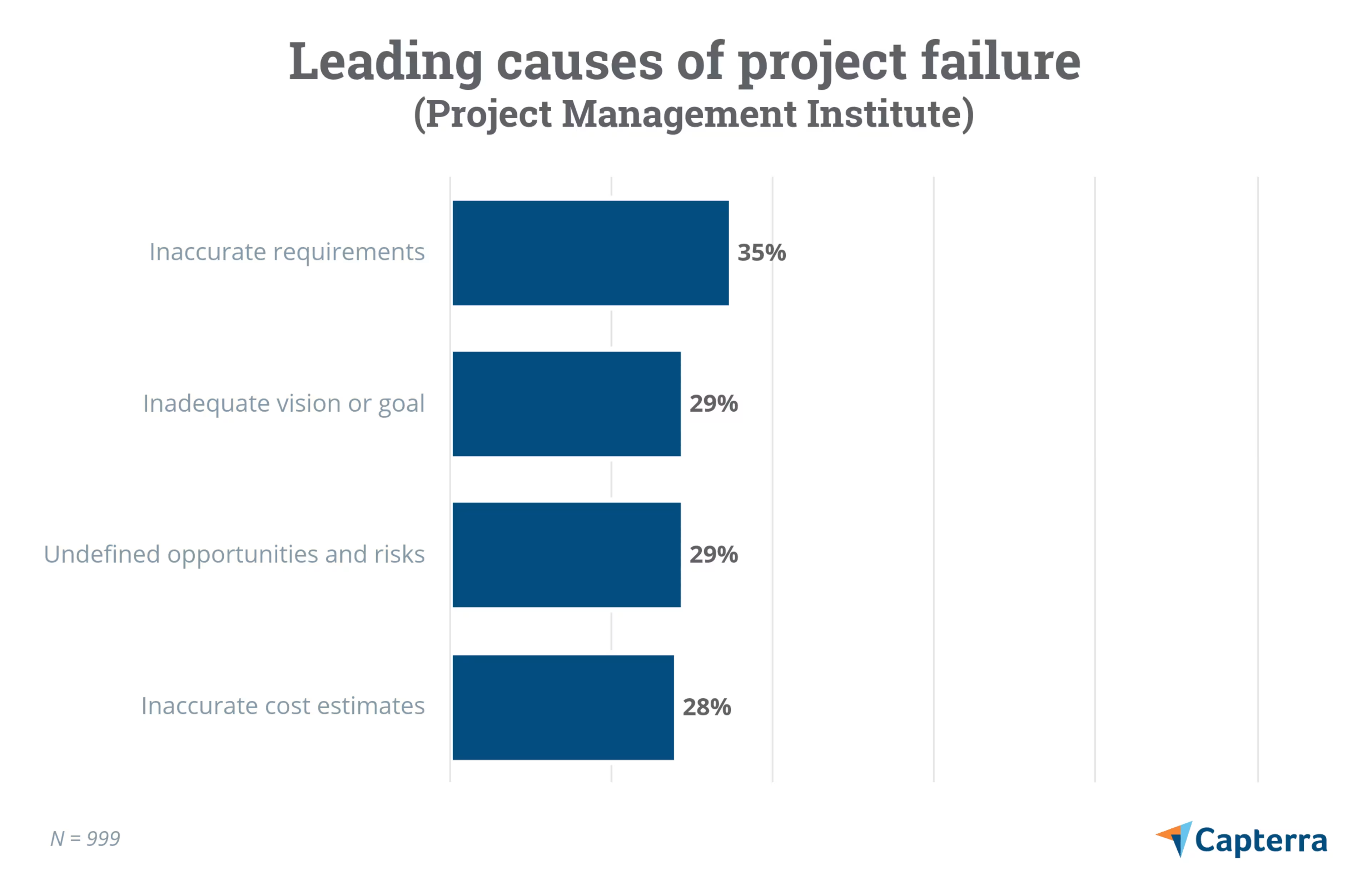Don't know how to write a project plan? This guide can help.

In the iconic 1980s television series "The A-Team," team leader Hannibal would often relish the satisfaction of a successful mission by delivering his catch phrase: "I love it when a plan comes together."
We never really got to see what went into these masterful plans, other than a lot of shooting that never actually hit anyone and some welding together of scrap parts in an old shed. We never saw Faceman or B.A. Baracus fire up their project management software to hash out these highly dubious plans; things just miraculously came together every time.
But any good project manager knows that there's no such thing as a successful project without a solid plan behind it. That's why we need to fill in what Hannibal and The A-Team left to the imagination: how to write a killer project plan.
The importance of project planning
Starting a project without a plan is like taking a trip without a map. You might eventually get where you're trying to go, but not without wasting a lot of time and money.
Four of the top seven project failure reasons cited by project managers in a PMI survey could have been resolved through better project planning.

Embarking on a project without a well-written plan can lead to scope creep, blown budgets, and missed deadlines.
By sitting down with your team and putting together a project blueprint before you start writing the code or cutting the wood, you can establish expectations that will guide you to success.
Note: All of these steps assume that you're using project management software to help with team communication, scheduling, budgeting, and scope. A project management tool is also the best place to document and store the information that you're collecting in the steps below. If you're reluctant to invest in project management software right away, you can test the waters with a free option.
How to write a project plan in 5 steps
Step 1: Define your project
Whether you're designing an app or opening a new location, always start by defining what you're actually trying to accomplish. But doing so isn't quite as simple as writing "I want to open a new crepe shop" on a sticky note.
There are six key elements to your project definition:
Objectives. What you're trying to achieve with this project, both externally (profits, market share, customer satisfaction) and internally (improving infrastructure, streamlining processes, employee retention). Use SMART (specific, measurable, achievable, realistic, and time-bound) objective guidelines.
Scope. No matter how carefully you plan, your project will experience change that you'll need to deal with. Rather than trying to identify everything that is within the scope of your project, it might be easier to identify what is definitely out of scope. This is also a good time to determine who will be responsible for approving/denying scope changes.
Success criteria. What will determine if this project is a success or failure? Refer back to your objectives during this step. Common criteria are projects being delivered on time and on budget, the finished product meeting a certain level of quality, and resolution of a specific business problem.
Deliverables. List the essential deliverables for your project. Examples might include a functioning mobile app for your business, a customer-ready crepe shop, or a new payroll system for your employees. Be as detailed as possible.
Requirements. Determine what you need (resources, personnel, budget, time) to meet the project objectives and deliver a successful outcome, and document it here. Consult all key stakeholders to make sure you're not forgetting anything.
Schedule. Use a work breakdown structure to determine what needs to be delivered and when, then use it to establish your baseline schedule, project milestones, and deadlines.
Step 2: Identify risks, assumptions, and constraints
Identifying potential pitfalls and setbacks before they happen can help you navigate rough waters when they inevitably hit.
In this stage, designate a team member as being responsible for risk management. Depending on the size of the project, this person may be you, the project manager, or another project lead. The important thing is that someone is responsible for monitoring whatever risks you've identified (e.g., missing deadlines, going over budget). Project management software can make risk management a cinch with an accurate project definition.
This stage (and project planning in general) isn't only about trying to get ahead of chaotic conditions. It's also important to document certain assumptions or constraints as you establish them, such as the resources available or the source of project funding.
If the project must be completed during normal working hours (no overtime) or completed using only resources that are already on hand, it's important for your team to know that.
Step 3: Organize the people for your project
This step is the meat of your project plan—after all, project management is largely people management—and the more thorough of a job you do in steps one and two, the easier this step will be.
Organizing your project means identifying and documenting the following:
Customer. Who will receive the final product? Are they internal or external?
Stakeholders. These are the individuals or groups with a vested interested in the successful completion of the project. Identifying your stakeholders will inform your project communications plan.
Roles and responsibilities. Establish the organizational hierarchy for the project. Who has final say on decisions? Who is in charge of communication with the customer? Who monitors the budget and schedule in your project management tool? Who's responsible for doing the actual work?
Step 4: List your project resources
In step one, you identified some high-level requirements needed to successfully complete the project, and you've just identified the human resources needed to perform and manage the work. Now it's time to focus in on the specific resources needed to get to work.
Examples of project resources include:
Technology (computers, software, mobile devices)
Salary
Vehicles
Physical materials
List all the resources you'll need, along with their costs, to inform your budget and resource management (don't worry, as long as your numbers are accurate, your project management software will do the heavy lifting here).
Step 5: Establish a project communications plan
So now you have a clearly defined project with a schedule, budget, resources, and team. Time to get to work, right? Wrong. You don't have a communication plan yet.
Poor communication is a leading cause of project failure, and if you take good team communication for granted, it could be the assumption that undermines your entire project.
That's because everything—meeting deadlines, staying on budget, etc.—hinges on your team members communicating with each other, your stakeholders, and customers.
A good project communications plan should include the following:
Communication objectives. What is the goal of a given message? Are you trying to figure out if a specific team has enough resources, or reminding a team lead that an important deadline is coming up soon? Know what you're trying to accomplish and let that guide your message before hitting the send button.
Target audiences. Who should be included in communications? For example, the president of the company may not need to be included in routine milestone updates, but should be consulted if the project is exceeding its budget.
Key content for communication. When you are communicating with your project team, what information should be included each time? Maybe you send a weekly status update to all the key stakeholders that includes progress toward upcoming milestones, reminders of important deadlines, and budget/schedule status. Document that information in your communications plan.
Communication method and frequency. How will routine team communications be delivered, and with what frequency? Weekly on Friday morning, or biweekly on Monday afternoon? Via email or a collaboration tool? Determine that information at the beginning of the project and stay consistent with it.
Check out this detailed guide on crafting a project communications plan (with a checklist), and some tips on how to correct some common workplace communication problems.
Don't stop now: More project planning resources
If you've noticed that your projects tend to spiral out of control, go over budget, miss deadlines, or fail to deliver a successful final product, it's likely that poor planning is at least partially to blame.
Clearly defining your project, identifying risks, assembling your team, gathering your resources, and drafting a communications plan will make a huge difference.
For even more project planning resources, follow our project management blog for tips on every phase of the project management cycle, from selecting a new project management system to deciding when you're ready to establish a project management office.
Start with these additional project planning resources:
Six Mistakes to Avoid When Making Your Project Schedule
3 Mistakes All Project Managers Make With Their Stakeholders